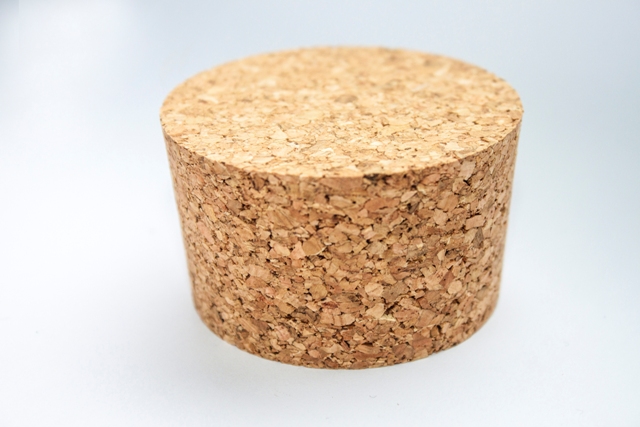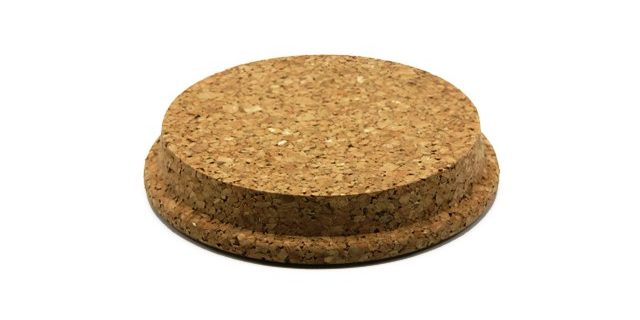We have been selling a lot of cork lids recently, most frequently for candles, but also for some dry foods and other products. When we refer to a lid, we mean a lipped lid as opposed to a conical lid (i.e. a cork lid with constant taper). Typically, the way we work is that we give a price based on an estimated size of the lid and then the client sends us their jar, based on which we give an accurate sizing for the lid so that we can get the perfect size to go into production. You should always bear in mind that sizing a cork lid is made more complicated because of cork’s elasticity – of course what makes cork such a fantastic material for making lids (and stoppers!) is that it readily compresses and then bounced back into its original form, but this means that when calculating the diameter of a lid you need to oversize the cork a little so that it will fit snugly, with the cork compressing slightly to seal the jar.
One of the tricky issues with sizing is that the height of the cork lid is very relevant in determining the diameter, as if the inner diameter of the lid which penetrates the jar it thin, then it needs to have a tighter fit than a thicker lid, because there is less area that will be in contact with the jar to compress. So the height is very important – generally a lid is made with the same height outside the jar as inside it, and we have gone down as low as 12mm (so 6mm inside the jar and 6mm outside), but generally we start at 15mm. Having a thicker cork can also mean that there is more of the cork for the end user to grip when removing the cork as well as it being an aesthetic issue.

We have a lot of experience with sizing cork lids and generally the way we do it is to work with our extensive range of samples with a client’s and try out a range of different sizes. If nothing fits from our samples, then we will make a new sample just to make sure that we get the fit exactly right. This is why we strongly recommend that all new clients send us a sample of their jar, because a small difference of 1mm in the diameter can make a big difference to the fit and working from a drawing is never the same as trying out samples. One thing worth noting is that we never supply clients from stock cork lids, so every lid we produce is made to exactly fit our client requirements.
The final issue to consider is the kind of cork that is used – generally we make our lids from standard grain agglomerated cork (0.5-4.0mm), but occasionally we get asked for micro-agglomerated cork, where the grains of cork are tiny and more bonding agent is used to make them; as a result, micro-agglomerated cork is less compressible than standard agglomerated cork, so the lids have to be made fractionally larger. Generally, we always advise that you use standard grain however, as it less expensive, has a more natural, ‘organic’ look to it, compresses better and is more environmentally friendly.
If you need any advise on the options available for cork lids, then please get in touch with us at CorkLink and we will do our very best to advise you – and you can see our page about cork lids here.








